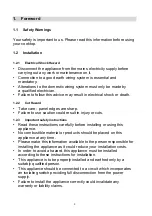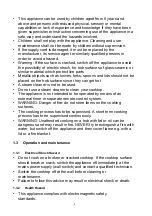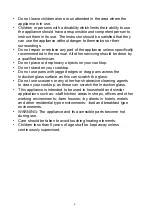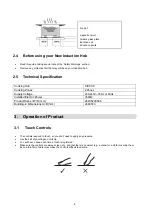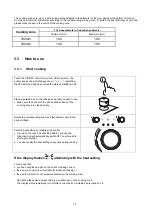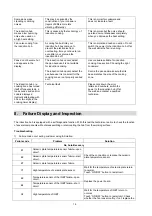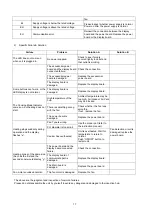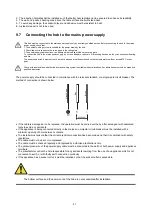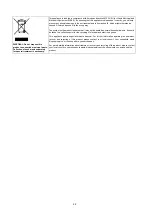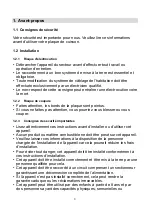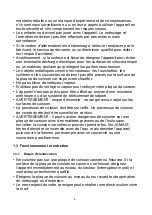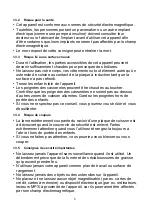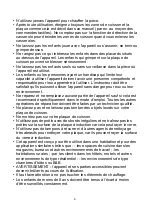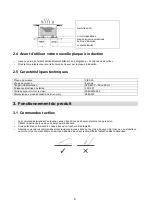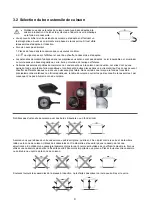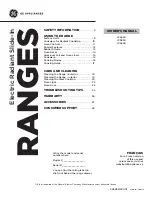
16
Some pans make
crackling or clicking
noises.
This may be caused by the
construction of your cookware
(layers of different metals
vibrating differently).
This is normal for cookware and
does not indicate a fault.
The induction hob
makes a low humming
noise when used on
a high heat setting.
This is caused by the technology of
induction cooking.
This is normal, but the noise should
quieten down or disappear completely
when you decrease the heat setting.
Fan noise coming from
the induction hob.
A cooling fan built into your
induction hob has come on to
prevent the electronics from
overheating. It may continue to run
even after you’ve turned the
induction hob off.
This is normal and needs no action. Do not
switch the power to the induction hob off at
the wall while the fan is running.
Pans do not become hot
and appears in the
display.
The induction hob cannot detect
the pan because it is not suitable
for induction cooking.
The induction hob cannot detect the
pan because it is too small for the
cooking zone or not properly centred
on it.
Use cookware suitable for induction
cooking. See section ‘Choosing the right
cookware’.
Centre the pan and make sure that its
base matches the size of the cooking
zone.
The induction hob or a
cooking zone has turned
itself off unexpectedly, a
tone sounds and an error
code is displayed
(typically alternating with
one or two digits in the
cooking timer display).
Technical fault.
Please note down the error
letters and numbers, switch the
power to the induction hob off at
the wall, and contact a qualified
technician.
8. Failure Display and Inspection
The induction hob is equipped with a self diagnostic function. With this test the technician is able to check the function
of several components without disassembling or dismounting the hob from the working surface.
Troubleshooting
1)
Failure code occur during customer using & Solution;
Failure code
Problem
Solution
No Auto-Recovery
E1
Ceramic plate temperature sensor failure--open
circuit.
Check the connection or replace the ceramic
plate temperature sensor.
E2
Ceramic plate temperature sensor failure--short
circuit.
E7
Ceramic plate temperature sensor failure
C1
High temperature of ceramic plate sensor.
Wait for the temperature of ceramic plate return
to normal.
Touch “ON/OFF” button to restart unit.
E3
Temperature sensor of the IGBT failure--open
circuit.
Replace the power board.
E4
Temperature sensor of the IGBT failure--short
circuit
C2
High temperature of IGBT.
Wait for the temperature of IGBT return to
normal.
Touch “ON/OFF” button to restart unit. Check
whether the fan runs smoothly; if not, replace the


